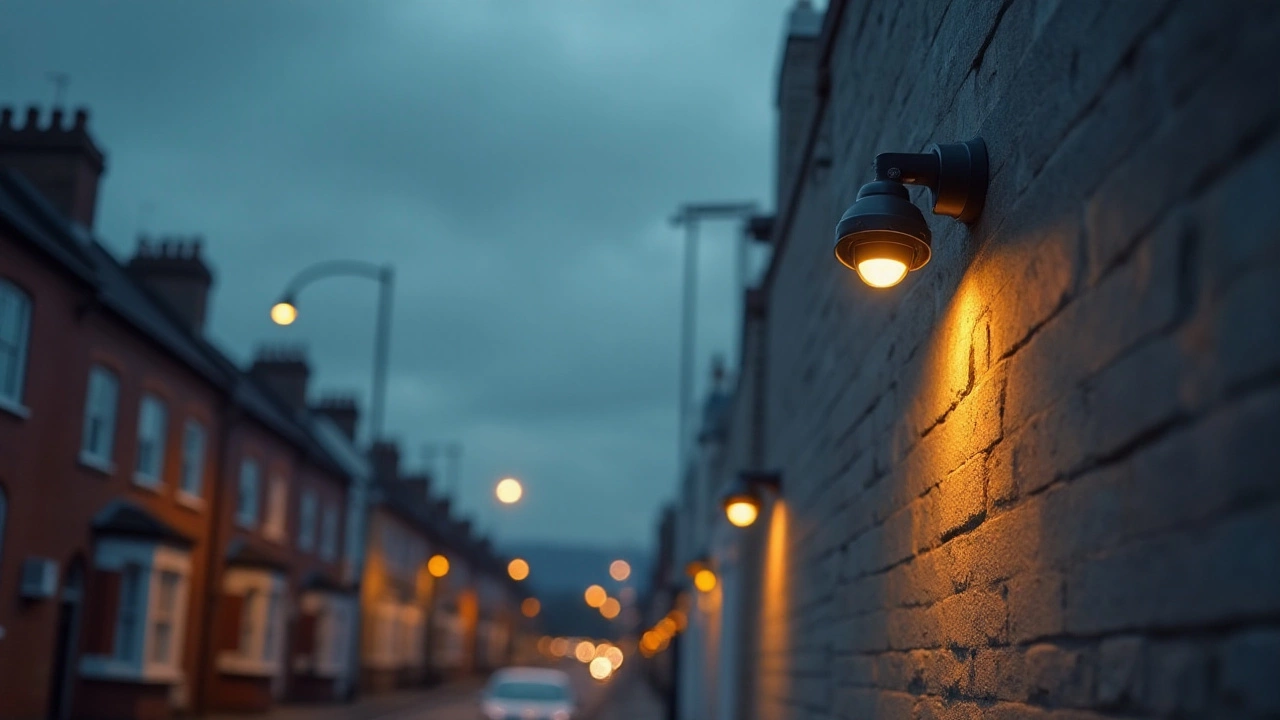When you shop for a security camera, you’ll see two main options: color (sometimes called RGB) and black‑and‑white (B&W). The difference isn’t just looks – it changes what the camera records, how you spot details, and even how it works at night. Below we break down the basics, when color is a win, and how to set up your system for the clearest video.
Color cameras capture reds, blues, greens and everything in‑between. That makes it easier to identify a person’s shirt, a car’s license plate, or a damaged product. In a busy store, a splash of color can help you tell a customer from a shoplifter at a glance.
Black‑and‑white cameras rely on light intensity instead of hue. They usually perform better in low light because they can amplify tiny amounts of illumination. If you’re watching a dark alley or a warehouse with little lighting, a B&W unit often gives clearer images than a color one.
So which is right for you? Think about the area you’re protecting. If it’s well lit – a front porch, a kitchen, or a retail floor – go color. If it’s a dim spot – a basement, a shed, or a pole‑mounted unit far from streetlights – B&W with infrared (IR) may be smarter.
Many people assume color cameras turn grayscale after dark. Modern models can keep color in low‑light situations if they have a built‑in IR filter that can be switched off. Look for terms like "color night vision" or "low‑light color" in the specs.
If your camera can’t do full‑color at night, consider adding external IR LEDs. They flood the scene with invisible light that the sensor captures, giving you a black‑and‑white picture with sharper details. Some users combine a color camera for daytime and a separate IR‑only camera for night – that way they get the best of both worlds.
Don’t forget placement. Point the camera where it can catch some ambient light – a street lamp, a porch light or a window glare. Even a few lux can boost a color sensor’s performance dramatically.
Another tip is to adjust the camera’s exposure settings. Many apps let you raise the brightness or lower the contrast for night shots. Play around until you see a balance that shows enough detail without washing out colors.
Finally, make sure your storage plan matches the footage quality. Color video uses more data than B&W, so you’ll need a larger SD card or a cloud plan with enough space. Check the camera’s compression options – H.265 can cut file size without losing much detail.
Choosing between color and black‑and‑white isn’t a one‑size‑fits‑all decision. Look at the lighting, the type of activity you want to record, and how much storage you’re willing to spend. With the right camera, the right placement, and a few tweaks, you’ll get clear, useful video that helps you spot what matters – whether it’s a bright red backpack or a shadowy figure in the dark.

When selecting a security camera for night vision, the color of the camera not only affects aesthetics but also its functionality and visibility. This article explores why the color choice matters, considering factors such as environmental blending, thermal regulation, and nighttime visibility. Understanding these factors can help you make an informed decision for effective surveillance. Learn how to match your camera's color with your surroundings to enhance security.